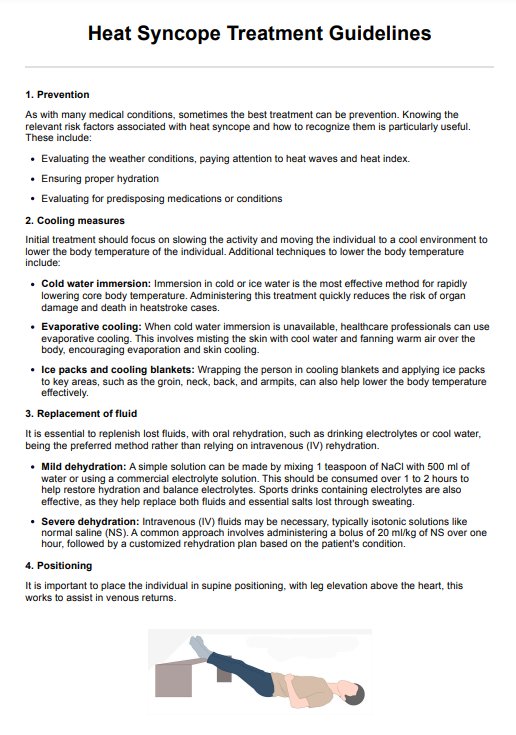While not typically life-threatening, heat syncope is a sign of heat-related stress and should be taken seriously. Ignoring it can increase the risk of more severe conditions like heat exhaustion or heat stroke.

Heat Syncope Treatment Guidelines Handout
Learn more about heat syncope in this guide. Access a free Heat Syncope Treatment Guidelines Handout for easier patient education.
Heat Syncope Treatment Guidelines Handout Template
Commonly asked questions
Two key ways to treat heat syncope include placing the individual in a supine position with their legs elevated above the heart level to assist with venous return and replenishing fluid losses, preferably through oral rehydration such as drinking electrolytes or cool water, rather than resorting to intravenous rehydration.
Heat stroke is a critical condition requiring urgent medical intervention, while heat syncope is a milder issue that typically resolves with rest and rehydration.
EHR and practice management software
Get started for free
*No credit card required
Free
$0/usd
Unlimited clients
Telehealth
1GB of storage
Client portal text
Automated billing and online payments










